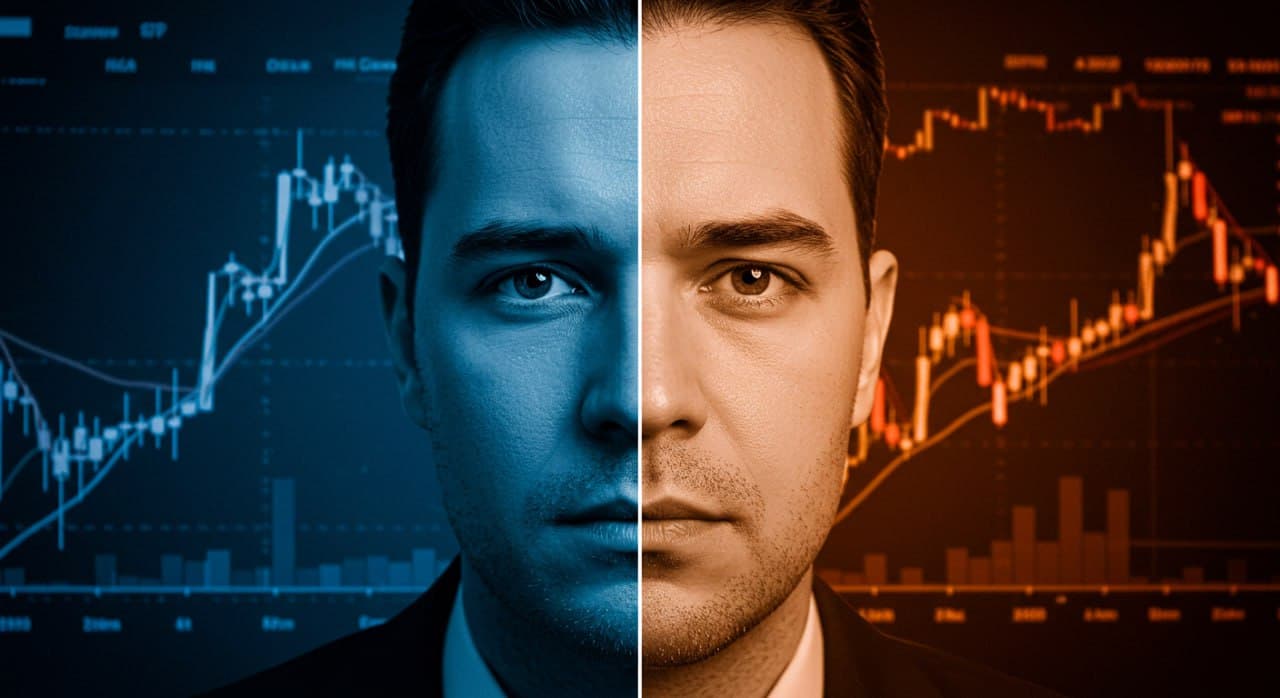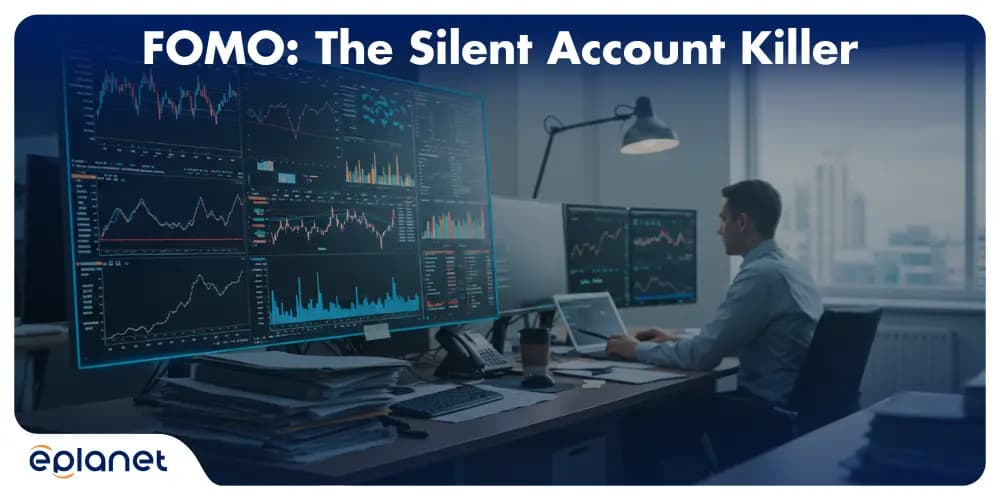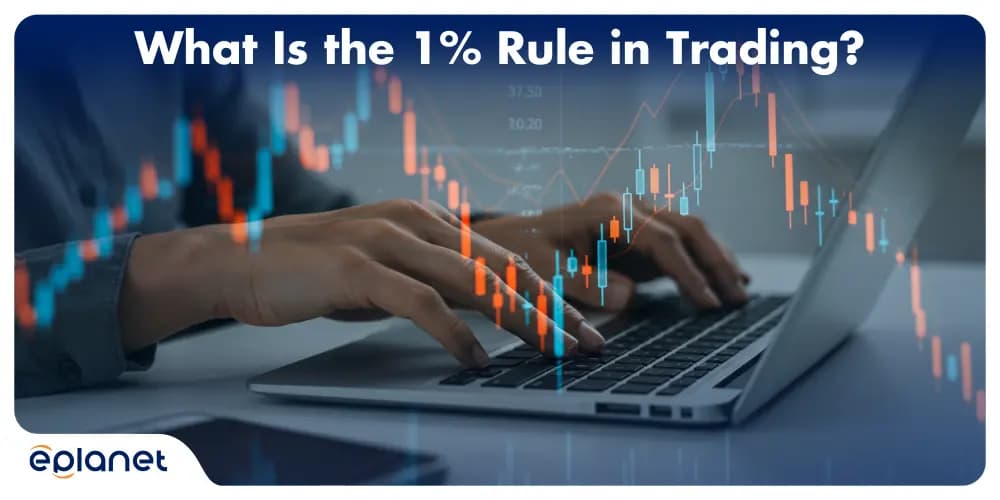Trading Psychology: Master Your Mind, Master the Markets
Discover trading psychology secrets that transform losses into wins. Learn emotional control, FOMO management, and proven strategies for traders.



Y'know, trading is like, way more than just staring at a bunch of charts and those candlestick thingies or whatever they call 'em. It's kind of this chaotic mental arena where your emotions and logic are constantly duking it out. Seriously, some days it feels like a heavyweight match in there. But honestly, I think the real kicker is that your success probably, like, hinges more on how well you can keep your cool rather than how much you know about the market. (I say this as someone who once managed to spill my coffee on my laptop while stressing over a trade. Not my finest moment.)
The difference between making consistent bank and hitting rock bottom, especially in Asia’s ridiculously unpredictable markets, is all about, y'know, getting a grip on your own trading psychology. At first, I thought it was all about just numbers and graphs? But now I'm not so sure. Maybe it’s just me, but I swear it's like trying to eat spaghetti with a spoon—totally awkward, but somehow you make it work. And speaking of awkward, does anyone else get that weird feeling of déjà vu when the market does something totally nuts? Yeah, me too.
Key Takeaways
- Emotional discipline beats technical prowess: 90% of trading success stems from psychological control, not chart reading skills
- Fear and greed are profit killers: These emotions create predictable patterns that destroy trading accounts faster than market crashes
- The 1% rule saves careers: Risk management through position sizing protects you from catastrophic losses that end trading journeys
- FOMO is your enemy: Fear of missing out leads to impulsive decisions and revenge trading that compound losses exponentially
What Is Trading Psychology?
Think of trading psychology as the mental game behind every buy and sell decision. It's the study of how emotions, biases, and cognitive patterns influence your trading behavior.
I've watched countless traders in Mumbai's financial district—brilliant minds who could dissect balance sheets in minutes—lose everything because they couldn't control their emotions. They knew the what and when of trading but never mastered the why behind their decisions.
Trading psychology encompasses:
- Emotional regulation during winning and losing streaks
- Cognitive bias recognition that clouds judgment
- Stress management under market pressure
- Decision-making processes in uncertain conditions
The Asian markets, with their unique volatility patterns and cultural influences, make psychological mastery even more critical. Our tendency toward herd mentality during festival seasons or monsoon predictions can amplify emotional trading mistakes.
How Does Trading Psychology Work?
Your brain wasn't designed for trading. Evolution wired us for immediate survival, not delayed gratification and statistical thinking. This creates a fascinating conflict every time you place a trade.
Here's the psychological sequence that happens in milliseconds:
The Fear Circuit: When you see red candles, your amygdala (fear center) screams "DANGER!" This triggers fight-or-flight responses that make you want to exit positions immediately, often at the worst possible moment.
The Greed Loop: During winning streaks, dopamine floods your system like a drug. You start believing you're invincible, increasing position sizes and taking unnecessary risks.
The Confirmation Trap: Your brain seeks information that confirms existing beliefs while ignoring contradictory data. If you're bullish on Reliance, you'll notice every positive news item while dismissing negative reports.

How Does Trading Psychology Work?
Forex Trading Psychology: The Currency Mind Game
Forex trading psychology presents unique challenges because currency markets never sleep. Asian forex traders face additional psychological pressure from:
Time Zone Stress: Major forex movements happen during US and European sessions when most Asian are sleeping. This creates anxiety about missing opportunities or monitoring overnight positions.
Leverage Anxiety: Forex brokers offer high leverage (1:100 or more), amplifying both gains and psychological pressure. A small adverse move can wipe out accounts, creating intense emotional stress.
Currency Patriotism: Indian traders often have emotional attachments to the rupee, making objective EUR/USD or GBP/JPY analysis difficult.
Here's a practical example: Rajesh, a Bangalore software engineer, started forex trading with $600. He was methodical with his equity investments but became emotionally reactive in forex. The 24/7 nature made him obsessively check positions, leading to overtrading and sleepless nights. His technical skills were solid, but his psychology was fragmented.
Psychological ChallengeForex ImpactSolution StrategyFOMO from 24/7 marketsOvertrading, exhaustionSet specific trading hoursHigh leverage anxietyPosition sizing mistakesUse lower leverage ratiosCurrency biasSubjective analysisFocus on technical setups onlyTime zone pressurePoor sleep, rushed decisionsAutomate with stop-losses
Trading Psychology Examples
Case Study 1: The Overconfident Day Trader
Priya, a chartered accountant from Delhi, started with $2,400 in her trading account. After three consecutive profitable weeks trading Nifty futures, she felt invincible. Her position sizes increased from $120 to $600 per trade.
The Psychology: Success bred overconfidence. Her brain interpreted short-term wins as skill rather than luck, leading to excessive risk-taking.
The Outcome: One bad day wiped out six weeks of profits. The psychological damage was worse than the financial loss—she questioned every future decision.
The Lesson: Consistency matters more than individual wins. Psychological discipline prevents boom-bust cycles.
Case Study 2: The Revenge Trader
Amit, trading from Pune, lost $300 on a single Tata Steel trade. Instead of accepting the loss, he doubled his next position size to "get even quickly."
The Psychology: Loss aversion created emotional urgency. His logical mind knew the strategy was flawed, but his emotional brain demanded immediate vindication.
The Outcome: The revenge trade lost another $360. What started as a manageable setback became a career-threatening loss.
The Lesson: Accept losses as business expenses. Emotional trading compounds mistakes exponentially.
Trading Psychology Books: Your Mental Training Library
Reading transforms amateur traders into psychological professionals. Here are essential books that have shaped successful traders:
"Trading in the Zone" by Mark Douglas: The bible of trading psychology. Douglas explains how to think in probabilities rather than certainties, crucial for Asian market volatility.
"Market Wizards" by Jack Schwager: Interviews with legendary traders reveal their psychological frameworks. You'll notice how they handle losses differently than amateurs.
"The Psychology of Money" by Morgan Housel: While not trading-specific, this book explains behavioral finance concepts applicable to every trade decision.
"Reminiscences of a Stock Operator" by Edwin Lefèvre: A classic tale of Jesse Livermore's trading career, showing how psychological patterns repeat across generations and markets.
For Indian context, I recommend "Coffee Can Investing" by Saurabh Mukherjea. While focused on long-term investing, it provides psychological insights relevant to Indian market participants.
FOMO: The Silent Account Killer
Fear of Missing Out isn't just a social media problem—it's a trading epidemic. FOMO creates more losses than market crashes, economic recessions, and company scandals combined.
The FOMO Cycle in Markets
Phase 1: The Trigger You see Zomato gaining 15% while your portfolio remains flat. Social media explodes with success stories. Your WhatsApp trading groups buzz with profits.
Phase 2: The Emotional Hurricane Regret floods your system. "Why didn't I buy?" becomes an obsessive thought. You start believing you're missing easy money.
Phase 3: The Impulsive Entry You buy at the day's high without analysis. Your usual discipline evaporates under emotional pressure.
Phase 4: The Inevitable Reversal The stock drops 8% the next day. Your FOMO entry becomes an instant loss, creating anger and frustration.
Phase 5: The Compound Mistake You either hold hoping for recovery (adding to losses) or sell immediately (locking in losses), then repeat the cycle with another "hot" stock.
FOMO Solutions That Actually Work
The 24-Hour Rule: Never enter a trade the same day you identify it. Emotions cool overnight, allowing rational analysis.
Opportunity Cost Clarity: For every "missed" opportunity, calculate how many similar setups occur monthly. You'll realize missing one trade isn't catastrophic.
Success Redefinition: Measure success by process consistency, not individual trade outcomes. This reduces FOMO pressure significantly.

FOMO: The Silent Account Killer
How to Improve Psychology in Trading
Psychological improvement requires systematic practice, not wishful thinking. Here's your development roadmap:
1. Pre-Market Preparation Rituals
Create consistent routines that prime your psychological state:
Morning Routine: Start with 10 minutes of meditation or breathing exercises. Review your trading plan before market open. Set daily risk limits.
Market Analysis: Spend 30 minutes reviewing overnight news, not as entertainment but as psychological preparation for potential volatility. Forex Factory is an excellent resource for checking economic news and events that could impact your trades.
Emotional Check-In: Rate your emotional state (1-10). If below 7, reduce position sizes or avoid trading entirely.
2. Real-Time Emotional Monitoring
The Traffic Light System:
- Green: Calm, focused, following plan = Normal position sizes
- Yellow: Slightly emotional but controlled = Reduce positions by 50%
- Red: Angry, fearful, or overexcited = Stop trading immediately
The 3-Breath Rule: Before every trade entry or exit, take three deep breaths. This simple practice interrupts emotional decision-making.
3. Post-Market Psychological Review
Journal Everything: Record not just what happened, but how you felt and why you made each decision.
Mistake Analysis: Categorize errors as technical (wrong analysis) or psychological (right analysis, poor execution).
Success Reinforcement: Note instances where psychological discipline prevented losses or enhanced gains.
How to Practice Psychology in Trading
Theory without practice is worthless. Here are specific exercises to build psychological muscle:
Exercise 1: The Paper Trading Psychology Lab
Use paper trading not for strategy testing, but for psychological training:
Week 1: Trade with imaginary money but real emotional reactions. Notice how you feel during wins and losses.
Week 2: Deliberately make some poor entries to practice loss acceptance and emotional regulation.
Week 3: Trade during high-volatility events (earnings announcements, policy decisions) to experience stress in a risk-free environment.
Exercise 2: The Small Size Challenge
Month 1: Trade with positions so small that outcomes don't matter emotionally ($5-10 per trade).
Month 2: Gradually increase size while maintaining the same emotional state as Month 1.
Month 3: Find your "emotional tipping point"—the position size where you start making different decisions.
Exercise 3: The Opposite Day Experiment
For One Week: When your emotions say "buy," wait 2 hours. When they scream "sell," review your original plan first.
This exercise separates emotional impulses from rational decisions, building awareness of your psychological patterns.
Is Trading 90% Psychology?
The popular claim that "trading is 90% psychology" oversimplifies a complex activity, but it's directionally correct for most traders.
Here's the breakdown for different trader types:
Trader TypePsychology %Technical %Market Knowledge %Beginner70%20%10%Intermediate80%15%5%Professional60%25%15%Algorithm Trader30%60%10%
Why Psychology Dominates:
Execution Gap: You might have perfect technical analysis, but if emotions cause poor entry timing or early exits, your edge disappears.
Consistency Requirement: Markets reward consistent application of mediocre strategies over sporadic application of brilliant ones.
Risk Management: The best technical setup becomes worthless if psychological pressure leads to oversized positions.
Adaptation Ability: Markets evolve constantly. Psychological flexibility helps you adapt strategies while emotional rigidity keeps you stuck in losing patterns.
However, psychology without market knowledge is equally dangerous. You need both emotional control AND technical competence.
What Is the 1% Rule in Trading?
The 1% rule is simple yet revolutionary: Never risk more than 1% of your account balance on any single trade.
For a $1,000 account, your maximum risk per trade is $10. This isn't your position size—it's your potential loss if stopped out.
Why 1% Works Psychologically
Reduces Fear: When maximum loss is predetermined and manageable, you trade without paralyzing fear.
Prevents Revenge Trading: Small losses don't trigger emotional responses that lead to bigger mistakes.
Enables Longevity: You can survive 100 consecutive losses and still have capital to trade (theoretically).
Builds Confidence: Knowing you can't destroy your account on one trade creates psychological freedom.
Calculating Your 1% Risk
Formula: Position Size = (Account Balance × 0.01) ÷ (Entry Price - Stop Loss Price)
Example:
- Account: $2,400
- 1% Risk: $24
- Stock Entry: $12
- Stop Loss: $11.40
- Position Size: $24 ÷ $0.60 = 40 shares

What Is the 1% Rule in Trading?
Common 1% Rule Mistakes
Mistake 1: Calculating 1% of position value instead of account balance.
Mistake 2: Ignoring the rule during "sure thing" setups.
Mistake 3: Using wide stops to fit desired position sizes instead of calculating proper sizes.
Advanced Trading Psychology Techniques
The Psychological Portfolio Approach
Instead of viewing each trade individually, think of your trading as a portfolio of psychological experiments:
20% High-Conviction Trades: Larger positions on setups where your analysis and psychology align perfectly
60% Standard Setups: Regular 1% risk trades following your systematic approach
20% Learning Trades: Small positions on new strategies or market conditions to expand psychological comfort zones
Emotional Hedge Strategies
The Inverse Position: When extremely bullish on a stock, place a small bearish trade as an "emotional hedge." This reduces psychological pressure on your main position.
The Time-Out Trade: After any significant loss, make your next trade with half the normal size. This rebuilds confidence without excessive risk.
The Celebration Brake: After big wins, reduce position sizes temporarily. Success often leads to overconfidence and subsequent losses.
Building Your Psychological Edge
Meditation and Mindfulness: Studies show that meditation improves trading performance by enhancing emotional regulation and decision-making clarity.
Physical Fitness: Regular exercise reduces stress hormones that interfere with rational thinking. Many successful traders maintain strict fitness routines.
Sleep Optimization: Poor sleep destroys emotional regulation. Prioritize 7-8 hours of quality sleep for optimal trading psychology.
Technology and Trading Psychology
Modern technology can either enhance or destroy trading psychology:
Helpful Technology
Trading Journals with Emotional Tracking: Apps that record your emotional state alongside trade data reveal psychological patterns.
Position Size Calculators: Automate the 1% rule to remove temptation for oversizing. Use forex calculators to quickly determine proper position sizes based on your risk tolerance.
Account Balance Hiders: Some platforms allow hiding P&L to reduce emotional trading based on account fluctuations.
Dangerous Technology
Real-Time P&L Displays: Constant profit/loss updates create emotional volatility that interferes with decision-making.
Social Trading Platforms: Seeing others' success triggers FOMO and comparison-based decisions.
News Alert Overload: Too much information creates analysis paralysis and emotional confusion.
Building Long-Term Psychological Resilience
The Three Pillars of Trading Psychology
Pillar 1: Process Over Outcomes Focus on executing your strategy consistently rather than obsessing over individual trade results.
Pillar 2: Probabilistic Thinking Accept that losses are inevitable and build systems that profit from edge over time.
Pillar 3: Continuous Learning View every trade as a learning opportunity rather than just a profit/loss event.
Creating Your Psychological Development Plan
Month 1-3: Foundation Building
- Establish pre-market routines
- Implement the 1% rule consistently
- Start maintaining a psychological trading journal
Month 4-6: Pattern Recognition
- Identify your personal psychological triggers
- Develop specific strategies for emotional situations
- Practice with smaller position sizes during volatile periods
Month 7-12: Advanced Integration
- Combine technical analysis with psychological awareness
- Develop your unique trading personality
- Build resilience through various market conditions

Building Long-Term Psychological Resilience
FAQs About Trading Psychology
What is trading psychology?
Trading psychology is the study of how emotions, cognitive biases, and mental states affect trading decisions. It focuses on managing fear, greed, hope, and other emotions that can interfere with rational decision-making in financial markets.
How does trading psychology work?
Trading psychology works by recognizing that human brains aren't naturally wired for successful trading. It provides frameworks and techniques to override emotional impulses with logical, systematic decision-making processes.
What are some trading psychology examples?
Common examples include FOMO (fear of missing out) leading to buying at market tops, revenge trading after losses, overconfidence after wins leading to larger positions, and panic selling during market downturns.
Which trading psychology books should I read?
Essential reads include "Trading in the Zone" by Mark Douglas, "Market Wizards" by Jack Schwager, and "The Psychology of Money" by Morgan Housel. For Indian context, consider "Coffee Can Investing" by Saurabh Mukherjea.
How can I overcome FOMO in trading?
Implement a 24-hour rule before entering trades, focus on your systematic process rather than individual opportunities, and remember that there are always new setups available in the market.
How do I improve my trading psychology?
Start with the 1% rule for risk management, maintain a trading journal with emotional notes, develop pre-market routines, and practice mindfulness or meditation to improve emotional regulation.
How can I practice better psychology in trading?
Use paper trading to practice emotional control without financial risk, start with very small position sizes, and gradually increase as you maintain psychological discipline.
Is trading really 90% psychology?
While the exact percentage varies by trader and experience level, psychology typically accounts for 60-80% of trading success. Technical skills and market knowledge are also important but secondary to emotional control.
What is the 1% rule in trading?
The 1% rule means never risking more than 1% of your total account balance on any single trade. This prevents catastrophic losses and reduces emotional pressure that leads to poor decisions.
Conclusion: Your Journey to Psychological Mastery
Trading psychology isn't a destination—it's a lifelong journey of self-discovery and mental refinement. The Asian markets, with their unique volatility and cultural influences, demand even greater psychological awareness than global markets.
Remember, every legendary trader went through the same emotional struggles you're experiencing. The difference isn't that they eliminated emotions—they learned to recognize, acknowledge, and manage them effectively.
Your technical analysis skills might get you into good trades, but your trading psychology determines whether you'll still be trading profitably in five years. The 1% rule protects your capital, but psychological discipline protects your career.
Start small, stay consistent, and remember that the market will always be there tomorrow. Your psychological development, however, requires intentional daily practice.
Ready to transform your trading psychology? Begin with just one technique from this article. Whether it's implementing the 1% rule, starting a psychological trading journal, or practicing the 3-breath technique before trades, small consistent actions create massive psychological shifts over time.
The market doesn't care about your emotions, but your emotions significantly impact your market results. Master your mind, and you'll master the markets.
What's your biggest trading psychology challenge? Which technique will you implement first? Your journey to psychological trading mastery starts with that first small step.
